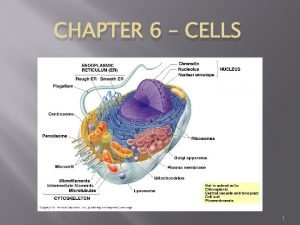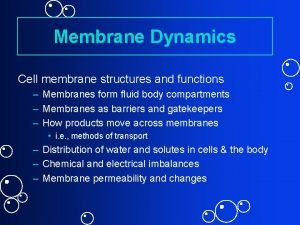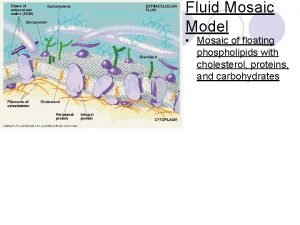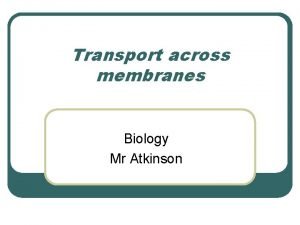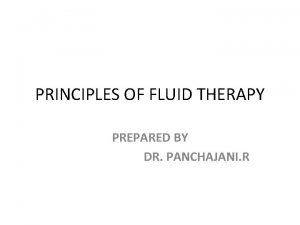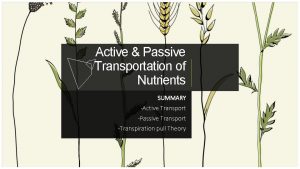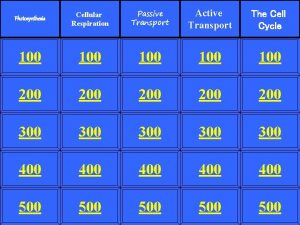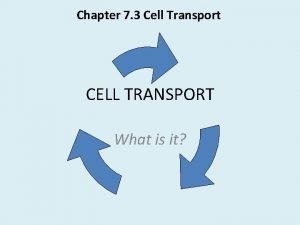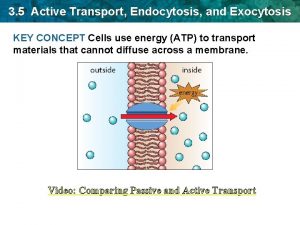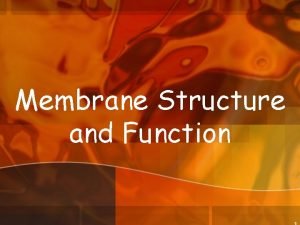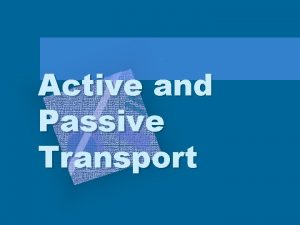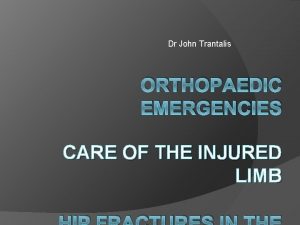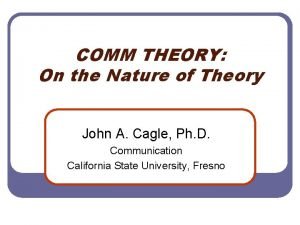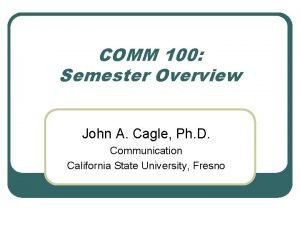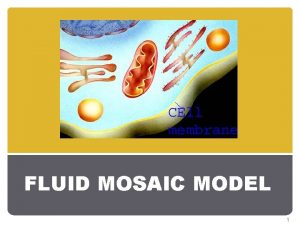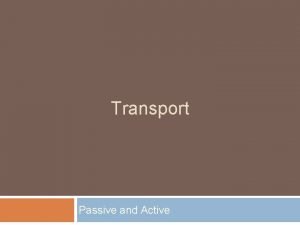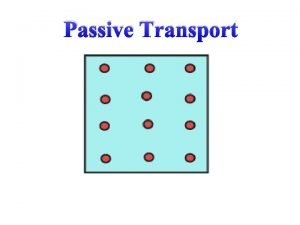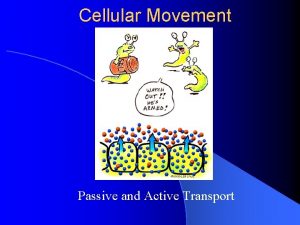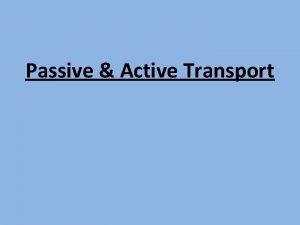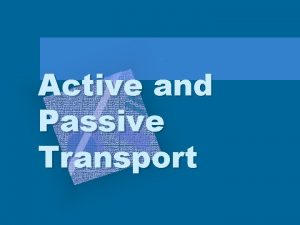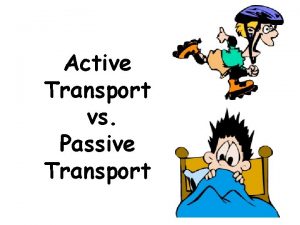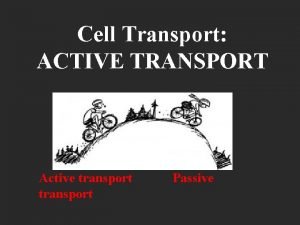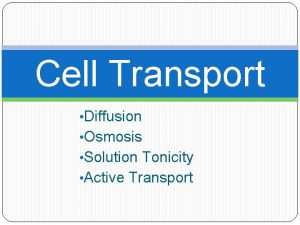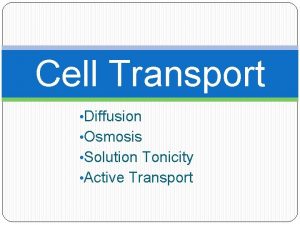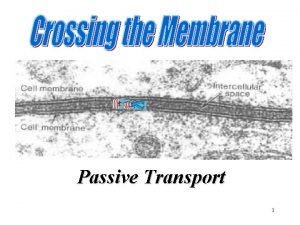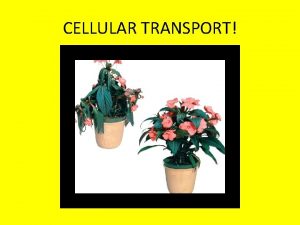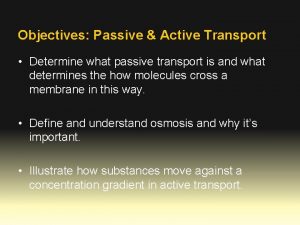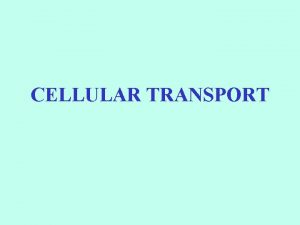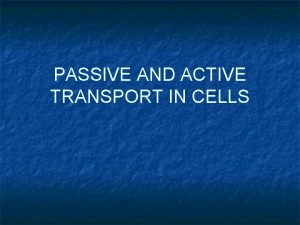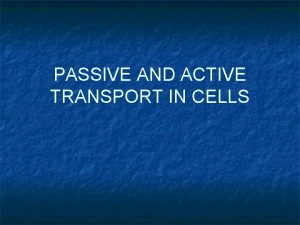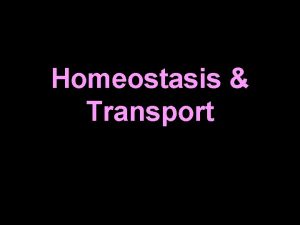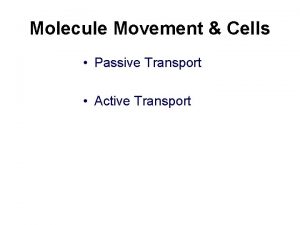Fluid Mosaic Model Passive Transport Active Movement Tonicity































- Slides: 31



Fluid Mosaic Model Passive Transport Active Movement Tonicity Misc. $200 $200 $400 $400 $600 $600 $800 $800 $1000 $1000

Final Jeopardy Fluid Mosaic Model

Final Jeopardy Model for the cell membrane based on the changing location & pattern of protein molecules in a fluid, phospholipid bilayer. Definition of the Fluid Mosaic Model

$200 Selectively permeable The cell membrane allows only what’s needed in/out of the cell. This is called…

$400 Phospholipid: The name of this molecule & its parts:

$600 Carbohydrate chain Glycoprotein Protein Name of this molecule & its parts:

$800 Glycolipid = carbohydrate attached to phospholipid Name this molecule & its parts

$1000 1. Channel proteins: move substances in/out freely 2. Carrier proteins: interacts with certain substances to move them in/out of cell 3. Cell Recognition: glycoproteins that identify the cell as “self” 4. Receptor Proteins: receive signals from surroundings 5. Enzymatic: biochemical reactions 5 membrane proteins & their functions

$200 Movement of substances down their concentration gradient & across the cell membrane Define passive transport

$400 Diffusion, osmosis, & facilitated transport Types of passive transport

$600 Diffusion is any substance; osmosis is only water molecules moving Osmosis crosses a membrane Difference between diffusion & osmosis

$800 Facilitated transport uses membrane proteins Difference between diffusion & facilitated transport

$1000 • Water • Small, non-polar molecules like oxygen & carbon dioxide • Lipid soluble molecules like alcohols Molecules that pass into/out of the cell passively.

$200 Active transport moves substances up their concentration gradient so requires energy Difference between passively & actively moving substances

$400 Active transport, exocytosis, & endocytosis Names of processes of actively moving molecules

$600 Pinocytosis (“cell drinking”) – endocytosis of small or liquid substances Phagocytosis (“cell eating”) – endocytosis of large substances Difference between pinocytosis and phagocytosis

$800 Ribosomes on ER make proteins; rough ER transports proteins to the Golgi; Golgi modifies & packages proteins in vesicles that fuse with the cell membrane releasing proteins out of the cell = exocytosis Relationship between ribosomes, rough ER, Golgi, & exocytosis

$1000 Explain the sodiumpotassium pump

$200 Tonicity = measure of osmotic pressure Solutions can be isotonic, hypertonic, & hypotonic Define tonicity & list 3 possible situations

$400 No net water movement, isotonic, no change to cell Net water movement? Type of solution? Affect on cell?

$600 More water into cell; hypotonic; cell swells Net water movement? Type of solution? Affect on cell?

$800 More water moves out of cell; hypertonic; cell shrinks Net water movement? Type of solution? Affect on cell?

$1000 Crenation – animal cell shrinks Plasmolysis – plant cell shrinks Turgid – plant cell swells Lysis – animal cell bursts Define: crenation, plasmolysis, turgid, lysis

$200 Hydrophobic = water-fearing Hydrophilic = water-loving Define hydrophobic & hydrophilic

$400 Phagocytosis – type of endocytosis When a white blood cell engulfs a pathogen, this type of transport is occurring.

$600 To provide energy ATP’s function

$800 Cell recognition proteins (glycoproteins) The type of transport protein that causes trouble with transplants

$1000 Nerve & muscle cells Where the sodium-potassium pump can be found.

The Jeopardy Champion!
 Primary vs secondary active transport
Primary vs secondary active transport Primary active transport vs secondary active transport
Primary active transport vs secondary active transport Davson danielli model vs fluid mosaic model
Davson danielli model vs fluid mosaic model Davson danielli model vs fluid mosaic model
Davson danielli model vs fluid mosaic model Passive transport vs active transport venn diagram
Passive transport vs active transport venn diagram Active vs passive transport venn diagram
Active vs passive transport venn diagram Pinocytosis vs phagocytosis
Pinocytosis vs phagocytosis Active transport diagram
Active transport diagram Simple diffusion def
Simple diffusion def Hypostonic
Hypostonic Atkinson
Atkinson Dextran iv fluid
Dextran iv fluid Bioflix activity membrane transport active transport
Bioflix activity membrane transport active transport Bioflix activity membrane transport diffusion
Bioflix activity membrane transport diffusion Active vs passive transport
Active vs passive transport Active and passive transport
Active and passive transport Is photosynthesis active or passive transport
Is photosynthesis active or passive transport Active or passive transport
Active or passive transport Exocytosis active or passive transport
Exocytosis active or passive transport Exocytosis active or passive
Exocytosis active or passive Difference of active and passive transport
Difference of active and passive transport Active vs passive transport
Active vs passive transport Contraindications of passive movements
Contraindications of passive movements Dr john trantalis
Dr john trantalis Becker's mosaic model of communication
Becker's mosaic model of communication Becker's mosaic model of communication
Becker's mosaic model of communication Viscoseal
Viscoseal Fluid statics deals with fluid at rest
Fluid statics deals with fluid at rest Fluid statics deals with
Fluid statics deals with Body fluid compartments
Body fluid compartments Interstitial fluid vs extracellular fluid
Interstitial fluid vs extracellular fluid Interstitial vs intracellular
Interstitial vs intracellular



